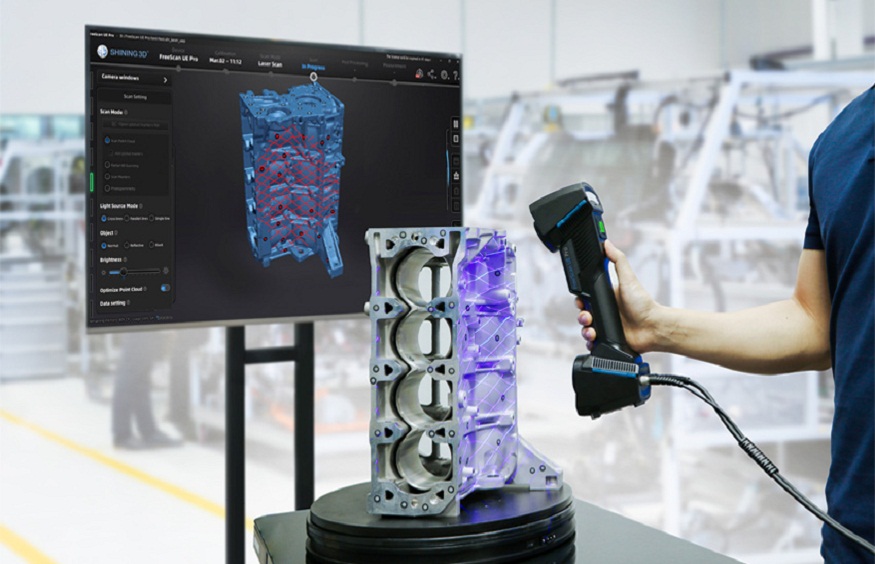Design and creation are constantly being pushed to the limit in Dubai, a city acknowledged for its futuristic cityscape and architectural wonders. The structure of this colourful town has completely changed within the last several years due to the incorporation of 3-D scanning technology. Thanks to its exceptional precision, efficiency, and innovative design system, this modern-day technology has emerged as an essential tool for engineers, architects, and designers. From theory to implementation, this text examines the numerous ways that three-D scanning services are improving architectural design in Dubai.
Dubai’s Architectural Scene’s Increasing Use of 3D Scanning:
Due to its potential to revolutionize the way buildings are deliberately, repaired, and maintained, Dubai’s architectural community has embraced the 3D scanning era with open arms. Throughout all levels of architectural projects, from preliminary web page surveys to the very last construction verification, this non-invasive approach for collecting distinctive spatial information has observed use.
Improving Planning and Analysis Accuracy for Sites:
Encompassing unmatched precision in site research and planning is among the main ways that 3D scanning services increase architectural design in Dubai. While still treasured, traditional surveying strategies can be hard work in depth and liable to human errors. However, in a fraction of the time, 3-D scanning presents a correct and thorough virtual representation of a place.
Project-aiding architects in Dubai may now acquire millimetre-accurate, comprehensive topographical data, encompassing flora, existing structures, and rugged terrain. Early in the design process, decisions can be made with more knowledge thanks to the abundance of data. To guarantee that a new skyscraper in Downtown Dubai blends in with the current skyline and maximizes views and natural light, architects can utilize 3D scans to study the nearby buildings.
Furthermore, early on in the process, 3D scanning aids in identifying potential difficulties or limitations. Accurate site information is essential in a city where floor space is limited and building codes are stringent. Building footprint optimization, setback compliance, and space utilization planning are all made possible by the use of 3D scanned data by architects.
Encouraging Detailed Geometric Designs:
Architects can work with and enhance complex shapes with never-before-seen precision by taking pictures of current structures or by digitally modelling upcoming developments.
The utilization of 3D scanning technology proved to be advantageous for the curved facade of the Museum of the Future, a recently constructed landmark in Dubai. To transform complex designs into digital formats for additional refining and structural research, architects were able to scan real models and prototypes. By using this method, the frontiers of what is feasible in Dubai architecture are pushed as innovative concepts are seamlessly translated into constructible structures.
Simplifying Projects for Restoration and Remodelling:
In addition to new construction, preservation, and renovation of the city’s old structures are also highly valued in Dubai. With its non-invasive method of thoroughly documenting existing structures, 3D scanning-services have proven essential in many restoration and reconstruction projects.
With 3D scaning, architects can obtain precise as-built documentation for buildings in the historic Al Fahidi quarter or for restoring older Deira structures. In the case of constructions without current or comprehensive planning, this is especially important. Any structural problems or deformations that might not be apparent to the unaided eye are captured in full by the scans, which cover every nook and cranny.
Architects can plan improvements with minimum impact on the original building thanks to this detailed knowledge. Accurate retrofitting designs are also made easier with its help, guaranteeing that contemporary conveniences can be incorporated into historic structures without sacrificing their integrity or character.
Remote access and easy sharing of 3D scanned data are commonplace in Dubai’s fast-paced construction industry, particularly for projects involving multinational teams. Communication and decision-making are made easier as a result. One example of this kind of real-time collaboration on difficult design issues is when an architect in Dubai shares a comprehensive 3D scan of a construction site with a structural engineer in London.
Moreover, virtual reality (VR) experiences with greater realism can be produced using 3D scans. Giving stakeholders the ability to virtually tour a proposed design or an existing space that is about to undergo refurbishment is especially helpful in client presentations. This degree of visualization has the potential to significantly impact project approvals and client satisfaction in a city recognized for its upscale real estate and discriminating clientele.
To generate comprehensive energy models of already-existing structures, 3D scanning can be employed. Retrofit projects that attempt to improve energy performance can benefit greatly from this. The most efficient energy-saving treatments can be simulated by engineers using an accurate digital model of a structure.
Architects and builders can verify that prefabricated parts will fit precisely when assembled on-site by scanning existing sites or partially constructed constructions. Especially in modular construction, where minor deviations can cause major problems during assembly, this level of accuracy is essential.
As an illustration, 3D scanning has been utilized to precisely measure station locations during the development of Dubai’s growing metro system. In these intricate urban settings, this data enables the accurate prefabrication of structural and interior components, expediting the building process and reducing on-site labour.
Optimizing Quality Assurance and Project Administration:
3D scanning services provide useful tools for quality assurance and project management during the building process. It is possible to verify that the build is proceeding as planned by regularly comparing scans of a construction site with the original design models. This may result in major time and resource savings by enabling the early discovery of any deviations or faults.
This degree of supervision is crucial in the cutthroat construction industry in Dubai, where project deadlines are frequently strict. 3D scanned data can be used by project managers to better efficiently schedule tasks, keep tabs on progress, and manage relationships between various trades.
In addition, a thorough record of the project is produced by the detailed documentation that 3D scans offer during the building process. For repairs, maintenance, and conflict resolution in the future, this can be quite helpful.
Conclusion:
A new generation of performance, innovation, and precision has begun with the incorporation of architectural 3D design in dubai tactics. With its ability to streamline rehabilitation initiatives, facilitate complex designs, beautify web page analysis, and foster higher cooperation, this generation has turned out to be a crucial device for architects.
3D scanning will simply end up more and more vital as Dubai develops and pushes the boundaries of architectural innovation. The city’s lofty architectural aspirations may be realized in this way, and it additionally fosters greater green, cooperative, and sustainable design strategies.

